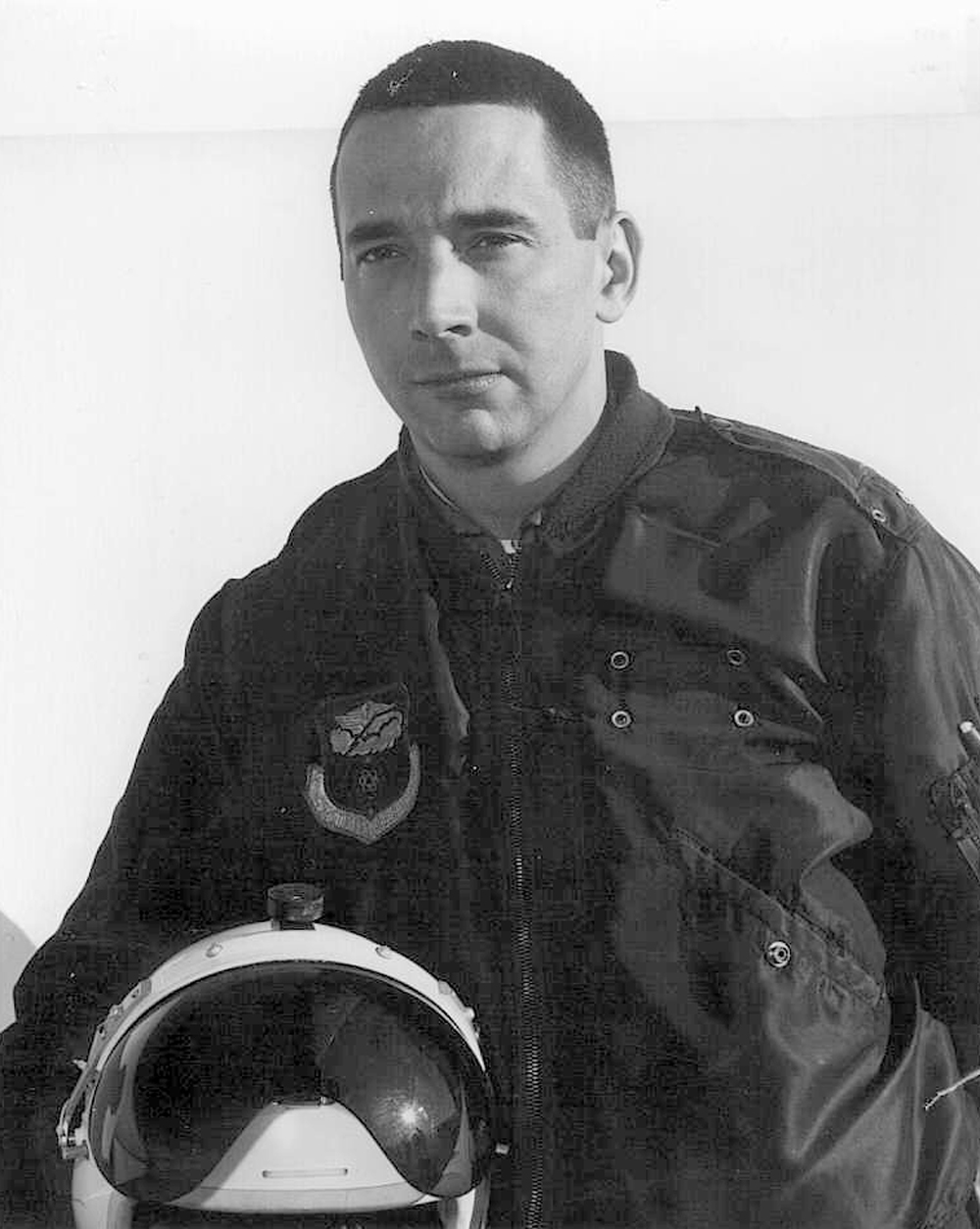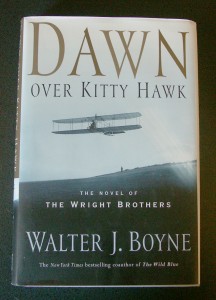
Walter Boyne, who will be inducted into the National Aviation Hall of Fame in July, learned to fly at Kirkland Air Force Base in the 1950s. He went on to fly B-52 bombers and retired from the Air Force with more than 5,000 flying hours.
By Henry M. Holden
At the age of 5, New York Times best-selling author and retired Air Force Colonel Walter J. Boyne knew he wanted to fly.
“You’ve heard the term ‘gestalt,” an event that is just so powerful it stays with you,” Boyne explains. “I can remember my brother’s buddy coming over with a dime novel about airplanes. The cover had two brilliantly colored airplanes in combat, with guys shooting at each other. I looked at that cover, and from that moment, I was fixated on becoming a pilot. I was a real obsessive-compulsive; today they’d shoot me full of Ritalin. I fell in love with flying, and my only goal was to get into the Air Force.”
Boyne was born during the Great Depression and was raised in East St. Louis, Ill.
“We were poor, and so was everyone else,” he remembered. “You know you’re poor when they come and turn the lights out, or you don’t have any food in the refrigerator. But somehow, we didn’t feel depressed by it. We said, ‘Oh well, everybody else is poor, too.’ We got a lot of pleasure out of very simple things.”
Boyne earned some scholarships and was able to attend Washington University for two years.
“That qualified me for the Air Force’s aviation cadet program,” he said. “I went into aviation cadets in May 195I, and trained as an enlisted man while I waited for my aviation class slot. I started flight school in November 1951.”
Boyne believed in the valuable training for enlisted men.
“My experience in the cadet program led me to believe that every officer should spend six months as an enlisted man first,” he explained. “It will give you a side of the picture you won’t get anywhere else, and the experience is invaluable later when you’re an officer. You get a better handle on what their life is like.”
During the Korean War, the men who wanted to get into flight school had to go through the enlisted program first.
“The guys in the aviation cadet program had a fire in their belly,” Boyne said.
After graduating from flight school in December 1952, Boyne flew B-47 bombers in the Strategic Air Command until 1956. In 1957, the Air Force sent him to the University of California at Berkeley. He described that time as “the pre-hippie era.”
“It was a paradise,” he said.
He graduated with honors with a degree in business administration. He went on to earn his master’s degree from the University of Pittsburgh.
“Two years later, I was accepted for Harvard Business School’s doctorate program,” said Boyne. “Someone in the officer assignment section noticed I was going to school too much and decided to put me back into the cockpit. But later, I got an honorary doctorate from University of Salem, in West Virginia.”
Boyne flew as a nuclear test pilot with the 4925th Nuclear Test Group at Kirtland Air Force Base, flying the B-47 and B-52 bombers. After serving in Vietnam, Colonel Boyne retired with more than 5,000 hours in aircraft ranging from a Piper Cub to the B-52.
A parallel career
In 1962, while still in the Air Force, Boyne began a prolific research and writing career. He’s written more than 500 articles and 45 books, including eight novels, with several appearing on the New York Times best-seller list. He’s one of only a few authors who’ve had both fiction and nonfiction books on the Times list.
Boyne was prompted to become a writer because of what he was reading in the contemporary magazines of the time.
“There were a couple of good writers, like Arch Whitehouse and Donald Keyhoe, but most writers regurgitated the same stuff all the time,” he said. “Other lesser-known writers wrote their history from what Keyhoe and others had written. You’d read the same old stuff about Manfred von Richthofen, Frank Luke and all the others.”
Boyne decided to write about some of the lesser-known people and airplanes.
“At the time, we had some good flying magazines in the U.S. but nothing that covered historical planes, so I sent the piece to a magazine in Britain,” Boyne said. “I can’t describe the intoxicating feeling when I got the acceptance letter; they were going to pay me $29. I just couldn’t believe my good fortune. It turned out there was a big demand for historical material, so I started churning it out. I’m still intoxicated with that feeling.”
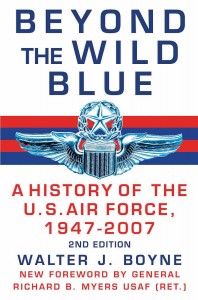
Beyond the Wild Blue: A History of the U. S. Air Force 1947-2007” is a look at a turbulent 60-year history. This is an updated second edition of an earlier Boyne book.
Boyne’s first article was on the P-46, which is now in the National Museum of the United States Air Force.
“I just happened to run into some people who knew the story behind the plane and knew the pilot who flew it,” he remembered. “I wrote the article on an old Smith-Corona typewriter, out in an old tool shed alongside the house. It was freezing cold, and all I had was an old space heater.”
Boyne’s fiction includes “The Wild Blue,” which made it to the New York Times best-seller list three times. His early endeavors included “Trophy for Eagles,” “Eagles at War” and “Air Force Eagles.”
Boyne says “Dawn Over Kitty Hawk: the Novel of the Wright Brothers” is his favorite work. But when he first submitted it for publication, he didn’t know how well it would be accepted.
“I sent the manuscript in, and three months went by without hearing anything,” he said. “Then I got a call from my editor, Bob Gleason. He said, ‘Walt, this book is a masterpiece! Now, I’d like you to write a three-volume trilogy on the history of jet aviation, in novel form.”
“Roaring Thunder: a Novel of the Jet Age” and “Supersonic Thunder: a Novel of the Jet Age” were both published in 2006. “Hypersonic Thunder: a Novel of the Jet Age,” which Boyne is working on now, is challenging. He says that when writing about history, it’s more difficult to write fiction than nonfiction.
“Characters in nonfiction can be introduced without much background,” he explained.
“In these three novels, I have to maintain a fictional family with children and grandchildren. You have to be able to convey that convincingly, and that’s challenging.”
“The Leading Edge” is one of Boyne’s nonfiction favorites.
“I got a lot of good feedback, but I think my all-time favorite nonfiction is ‘The Influence of Air Power upon History,'” he says.
Boyne said he wouldn’t have presumed to write a book with that title, because the “The Influence of Sea Power on History,” by Alfred Thayer Mahan, is such a classic.
“If an editor asks you to do something, you’re inclined to do it,” he said.

Walter Boyne’s latest nonfiction book, “Soaring to Glory: the United States Air Force Memorial,” will be out in September 2007.
“Clash of Wings” is about air power in World War II, and “Clash of Titans” is about its sea power. Of the latter, former Secretary of the Navy John Lehman said Boyne “should get a Pulitzer Prize, because he detailed events so well.”
The “Two O’clock War: The Yom Kippur Conflict and the Airlift that Saved Israel” and “Dawn Over Kitty Hawk” have been optioned for possible films. Because of computer graphics, he has hopes for some of the earlier novels as well, such as “Eagles at War” and “Clash of Wings.”
“In the past, it was cost prohibitive to create mock-ups for planes that didn’t exist anymore,” he said. “Producers are using some pretty realistic and convincing computer animation these days.”
“Soaring to Glory: the Story of the Air Force Memorial,” is Boyne’s latest nonfiction book. It’s about the recently opened Air Force Memorial in Arlington, Va., and will be out in September 2007.
Boyne may seem like he’s under pressure to produce, and maybe he is, but he enjoys it.
“When you work under pressure, you get less of a ‘Hamlet complex,'” he says. “Hamlet was indecisive, worried and always introspective. When you write as I do, you don’t have time for those agonizing self-reappraisals. You just press on.”
Boyne says he’s probably helped a hundred people to become writers or helped their progress.
“It may be my greatest legacy,” he says. “I’m proud of the people I’ve helped, but I’ve had to be candid and tell some to forget about writing.”
Boyne has some advice for future writers.
“If I were giving advice about writing a novel, I’d say to not do what I do: write a story about an extended period of time,” he said. “It’s just awfully hard to squeeze in 30 years, and tell it convincingly in human terms.”
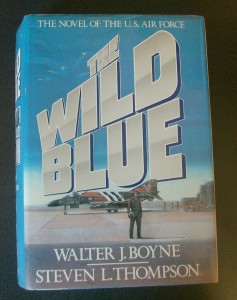
“The Wild Blue,” a 626-page novel, follows the lives of six men from basic training and the Berlin Airlift to Vietnam and the Middle East.
Boyne has appeared on hundreds of television shows. “Beyond the Wild Blue: A History of the U.S. Air Force” became a five-part series, which Boyne hosted and narrated. “Clash of Wings” was a 13-part series for the PBS network.
“It was a wonderful opportunity to put books directly into television,” said Boyne.
A third career
In 1972, two years from retirement, Boyne read that former astronaut Mike Collins had been appointed the head of the National Air and Space Museum.
“I wrote him a letter congratulating him,” Boyne said. “I also wrote that if he ever needed any help at the museum, I’d be interested in working there. I cited some of the stuff I had written.”
Boyne didn’t get the response he expected.
“I got a classic “don’t call us, we’ll call you” reply letter,” he said. “I actually laughed and threw it in the wastebasket.
Boyne left for California for his last assignment.
“I had intended to retire out there and get a job, when I got a letter saying to come back for an interview,” he remembered. “I went back and they hired me as the curator of air transport. I eventually supervised the introduction of all aircraft into the exhibits for the new museum, which was scheduled to open in 1976.”
Boyne also managed Silverhill, the museum’s aircraft restoration center. In 1977, it opened as the Paul E. Garber Preservation, Restoration and Storage Facility.
When Boyne became acting director of the NASM in1981, he began lobbying for five changes: adding a magazine, improving the restaurant, adding more restrooms, flying an IMAX camera on a space shuttle and landing bigger airplanes at a nearby airport.
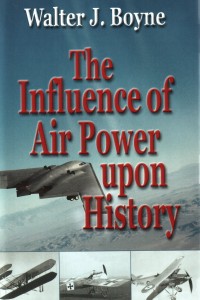
The Influence of Air Power upon History” studies the development of airpower philosophy from concept to practical execution. This book covers airpower from World War I through the recent conflicts in the Middle East.
The Air & Space Smithsonian magazine debuted in 1986, and became very popular. Additional restrooms and a better restaurant were added, and the IMAX theater was added later. A few years ago, a facility built adjacent to Dulles Airport for landing the big airplanes opened.
Boyne also had an idea for a photo retrieval system for the museum’s vast photo collection. In 1985, he developed and patented a digital information system. An early version of a search engine, the museum used it for all its digital images.
In 1983, Boyne became director of the NASM. He pioneered numerous projects to provide the public with the highest level of aerospace education and information. He left the museum in 1989 to devote more time to writing.
In 1998, the National Aeronautic Association named Boyne an Elder Statesman of Aviation. The Federation Aeronautique Internationale honored him with its 1998 Paul Tissandier Diploma. In December 2006, the National Aviation Hall of Fame announced that Boyne would be one of its 2007 enshrinees. The ceremony will take place July 21.
“I’ll just be lowering the average, but I’m going to accept on behalf of all my fellow laborers in the vineyard of aviation history, including writers, museum people, television producers and so many more,” Boyne quipped.
For more information about Walter Boyne, visit [http://www.air-boyne.com].











